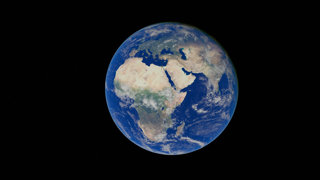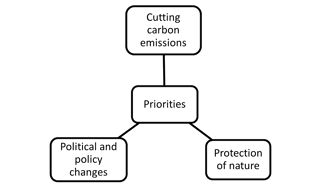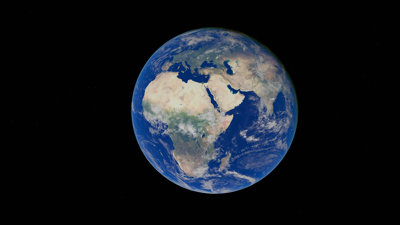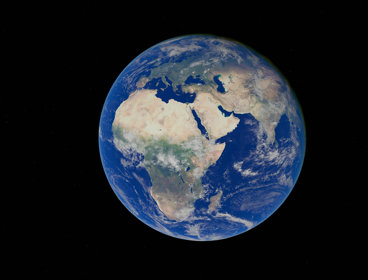Introduction
The environmental movement describes the efforts of groups and individuals who are actively seeking and working to improve the natural world through various means including campaigning, political advocacy, and policy change. Although not always documented, it is thought that people have had concerns about the human impact on the environment dating back centuries. As early as the 16th Century, regulations were introduced to address environmental issues with John Shakespeare (William Shakespeare’s father) being fined one shilling for creating an unwarranted muck heap. There have also been ancient Greek writings from around 200 BCE mentioning concerns over the deforestation happening on Greek islands to build boats for war.
However, it wasn’t until the late 1960s that the movement gained traction to become a global movement driven by local actions. This period marked a turning point, as humanity saw Earth from space for the first time - an image that underscored the planet’s fragility and inspired a new wave of environmental consciousness.

By the 1980s, environmental concerns had become mainstream reaching a bigger global audience. News reports showing the Amazon burning, the impacts of the Chernobyl disaster and scientific evidence of the hole in the ozone layer called people to action. As a result, the environmental movement gained support as more people wanted to take action leading to stronger environmental policies and, in the case of the ozone layer, successful efforts to reverse some of the damage. It was in the same decade, the environmental movement also made its mark in politics when the Green Party grew in popularity winning 17% of the vote in the European Elections showing people’s shift in environmental perspective.
Voicing the unvoiced
Youth movements and activism has been crucial in the role of building awareness on various issues not to mention the climate crisis – voicing the unvoiced. Education centres serve as a hub of societies and groups aimed at tapping into the passions and interests of student groups who, with the support of similar mindsets collectively protesting against socioeconomic, political and environmental injustices.
When looking at environmental activism, youth movements have been at the forefront of gaining awareness and calling for change. A key example dates back to 1969 when a devastating oil spill in Santa Barbara caused the death of over 4000 seabirds and covered the Californian coastline in oil. Students at the University of Southern California and the University of California organised protests against the impact oil was having on the environment. These protests are thought to have been the basis of the first Earth Day in 1970 which inspired 10% of the American population to take to the streets and demonstrate against the impacts of industrial development.
Following the success of these early protests, youth-led demonstrations continued to grow in impact. More recently, a wave of global climate strikes in 2019 saw 7.6 million people worldwide take to the streets and demand action on climate change. This student-driven action was largely inspired by the action and media attention of one student, Swedish teenager Greta Thunberg.

Role of indigenous peoples
Article 29 of the United Nations Declaration on the Rights of Indigenous Peoples recognises the role indigenous peoples have in the protection and preservation of their environment. Found in almost every corner of the planet, indigenous peoples are vital in not only understanding our natural environment but also in the best position to help us understand it.
Indigenous communities are at the forefront of both local and global environmental activism. A notable example is the Standing Rock Sioux Tribe’s resistance against the Dakota Access Pipeline, which highlighted indigenous leadership in the fight for land and water protection. On a global scale, indigenous representatives actively participate in climate negotiations, including the United Nations Framework Convention on Climate Change (UNFCCC) Conference of Parties (COP) meetings, advocating for policies that reflect their environmental expertise and rights.
Indigenous peoples often see the impacts of climate change firsthand which directly affect their way of life. Sustainable practices of their environment have meant that the biodiversity they live within thrives. It is only because of external factors that the management of these places have become out of balance.
Priorities
Whilst there are several angles and actions to address within environmental activism, three key themes emerge as priorities for the next decade.

The most urgent priority is to cut carbon emissions. Rethinking how we generate energy, travel, produce food, and construct our homes is essential to keeping global temperatures within the limits set by the Paris Agreement. However, the challenge is to ensure that government and organisational policies allow for these cuts to take place in a sustainable way. By consulting with environmental action groups, governments can make strategic changes to their policies to reduce their carbon emissions. The UN global framework to protect at least 30% of global land and sea areas by 2030 forms the backbone in brining together global communities in the protection of our natural landscape. Working with environmental groups, will ensure not only relevant areas are protected but also a means to monitor the impacts of this on the environment.
Further reading
7 Student Protests that Made History, Earthday.org, January 15, 2020
File nameFiles
File type
Size
Download



